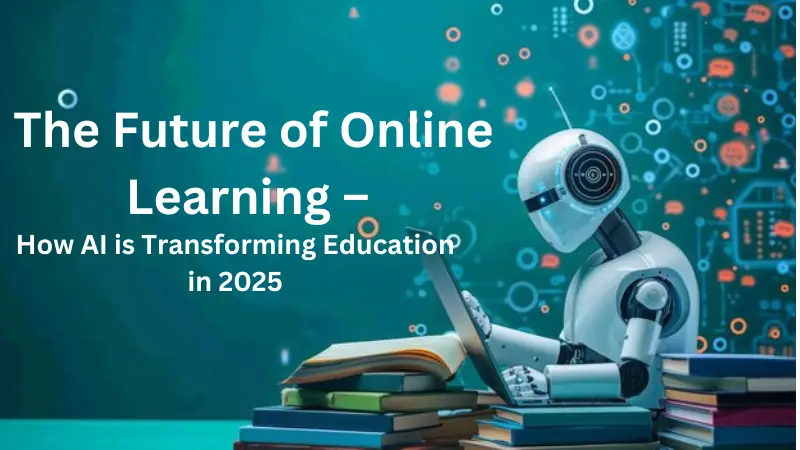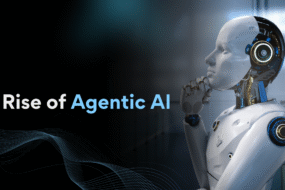Introduction
Classrooms and degree programs in 2025 feel different. Smart screens, digital libraries, and hybrid schedules are now the norm, but the most important shift is intelligent. Artificial Intelligence (AI) has stepped into core teaching and learning workflows, from lesson planning to assessment. As global organizations underscore, AI can expand access, improve quality, and better match instruction to diverse learners. Rising adoption of online platforms and campus systems has accelerated this shift, and what once sounded futuristic, adaptive learning paths, on-demand tutors, and instant feedback are now part of daily student life.
Personalized Learning
AI’s biggest promise in 2025 is personalization at scale. Instead of one pace for an entire class, adaptive platforms adjust to each learner’s strengths and gaps. When a student stalls on algebraic fractions, the system detects the pattern, revisits prerequisites, and serves targeted practice while nudging a more advanced peer toward enrichment.
Crucially, these platforms are becoming predictive. By analyzing interaction data, they can flag likely roadblocks before they appear and recommend timely mini-lessons, videos, or formative checks. Students experience a more humane learning arc: less frustration, more flow. Teachers, meanwhile, get dashboards that highlight concepts needing attention so they can intervene where it matters most.
AI Tutors & Chatbots
Students study across time zones and busy schedules, so around-the-clock support is invaluable. AI tutors and chatbots provide explanations, examples, and gentle nudges whenever a learner asks. They handle the routine, FAQs, definitions, step-by-step guidance and escalate complex issues to instructors.
For students hesitant to ask questions in class, conversational help lowers the barrier. Language features also translate guidance into a student’s preferred language, expanding inclusion for international cohorts. On many campuses, similar AI systems assist with academic planning helping students choose courses, track requirements, and meet deadlines so advising feels clearer and less stressful.
Assessment Tools
Assessment has long consumed instructor bandwidth. In 2025, AI lightens that load. Automated grading reliably handles quizzes and short answers, while writing analyzers offer formative feedback on structure, clarity, and evidence use. Instructors still own the judgment on complex work, but they no longer start from a blank slate.
The real leap is instructional intelligence: class-level analytics reveal where understanding slips, unit by unit, week by week. Rather than discovering gaps at exam time, teachers can reteach sooner, differentiate better, and celebrate growth with actual evidence. For students, faster feedback loops mean quicker course-corrections and more confidence.
Challenges
Data Privacy
Personalized systems run on data, lots of it. Protecting student information is non-negotiable. Institutions must set strict governance for data collection, storage, access, and retention, and be transparent about how models learn from learner activity.
Over-Reliance on Technology
AI can coach and scaffold, but it cannot replace the human presence that motivates, mentors, and models judgment. Healthy programs use AI to extend teachers, not eclipse them.
Equity & Access
Advanced tools can widen gaps if only well-resourced schools deploy them. Grants, open resources, and shared infrastructure are essential so learners in under-served regions benefit, too.
Algorithmic Bias & Transparency
If models train on skewed data, recommendations may unintentionally disadvantage certain learners. Clear documentation, bias testing, and opt-out pathways help keep systems fair and accountable.
Future Outlook
The next wave is multimodal AI- systems that understand text, voice, images, and video. Imagine a tutor that listens to a student explain a concept, spots the misconception in real time, and responds with a short simulation or a quick whiteboard sketch. On the access front, AI can bridge teacher shortages by delivering quality micro-lessons to remote areas, while translating content and feedback across languages.
Expect tighter links between learning and employability: AI that surfaces skill mastery evidence, curates project portfolios, and connects students with experiential learning. And expect stronger guardrails as ministries and universities adopt ethical frameworks, publish model cards, and require human-in-the-loop review for high-stakes decisions.
Conclusion
AI in 2025 is changing the daily rhythm of learning more tailored practice, faster feedback, calmer logistics and giving educators back time for rich discussions and mentorship. The promise is real, and so are the responsibilities: protect privacy, fight bias, keep humans at the center. If we hold to those principles, AI becomes not a replacement for teachers but a force multiplier widening access, raising quality, and helping more students see themselves succeeding.
FAQ: AI in Education (2025)
How is AI actually used in my class?
Common uses include adaptive practice, writing feedback, quiz generation, and chat-based help after hours. Many systems also summarize class progress so teachers can adjust quickly.
Will AI replace teachers?
No. The best results come from teacher-led classrooms that use AI to personalize and streamline while keeping human connection, mentorship, and judgment at the center.
What about privacy?
Schools should publish clear data policies, use secure vendors, and give students visibility into how data is used. Opt-out options and minimal data collection are good practice.
How does AI help with equity?
When implemented thoughtfully, AI can translate materials, provide on-demand tutoring, and deliver quality lessons to regions with teacher shortages broadening access to rigorous learning.






No Comments